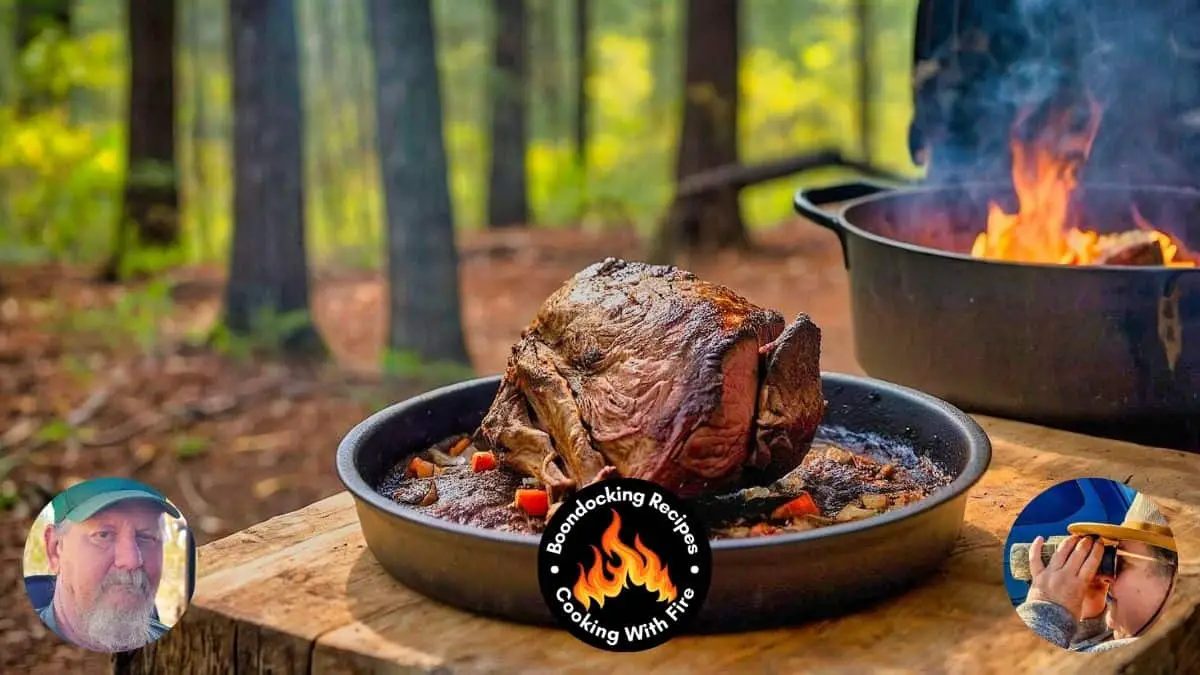
The Dutch oven Bison roast and orange sauce is a recipe that my husband and I love to cook outdoors. There’s something special about this dish that makes our meals feel like a celebration.
The Dutch oven Bison roast and orange sauce has a perfect blend of bison and the flavor of orange sauce. It’s a combination that’s both delicious and unexpected. The bison roast is tender, while the orange sauce adds a unique twist that keeps everyone coming back for more.
Dutch oven Bison roast and orange sauce is also great for feeding a crowd. It’s easy to make a large roast that can satisfy everyone. When we have guests over they always taste of the bison and the tangy orange sauce.
The health benefits of bison meat are another reason to cook the Dutch oven Bison roast and orange sauce recipe. Bison is leaner than beef and packed with protein. If you’re looking for a new recipe to try on your next outdoor cooking adventure, Dutch oven Bison roast and orange sauce is a great choice. It’s easy to make, full of flavor, and perfect for any outdoor setting.
Cooking Instructions For the Dutch Oven Bison Roast and Orange Sauce
- The first step of making the Dutch oven Bison roast and orange sauce is to start your fire or charcoals. You will using them for the Dutch oven Bison roast and orange sauce, so you will want to make sure you have plenty on hand.
- If using embers, get a large fire going using (preferably) hardwood and let it slowly burn down. This process from start to finish can take upwards of an hour.
- If using charcoals, fill a large chimney starter and light. This process will take approximately 20 minutes to get all the coals hot and ready. You will likely want to have some charcoals available in reserve.
- Add a flat fire great on top of the embers for cooking
- Heat Dutch oven to 300 degrees F. Pat your bison roast dry.
- Combine the flour, salt, and pepper in a bowl. Press the flour into the bison’s edges and all over its surface to coat it.
- Put the 2 tablespoons of olive oil and butter into the Dutch oven and cook it until it’s hot. Before setting the chuck roast aside on a platter, sear it on all sides.
- Return to the Dutch oven and pour in 1 cup of beef stock. Sauté the onions until they become transparent, stirring occasionally. Combine the remaining beef broth with the red wine, thyme, rosemary, and bay leaves.
- In the Dutch oven, place the roast, and bake for approximately two hours. After you’ve checked on the roast, throw in some carrots and potatoes and return the Dutch oven to the oven for about an additional hour, or until the potatoes are tender.
- After taking the Dutch oven out of the oven, scoop out any juice that may have collected within. If going for a thicker consistency, mix in a tablespoon of flour and the remaining juice.
- Serve and enjoy!
- Orange Sauce
- In a cast iron pan, heat up one teaspoon of neutral-flavored oil.Toss in the minced ginger and garlic and sauté for two to three minutes, or until aromatic. Stir often to prevent scorching Cook, stirring often, for 3 minutes after adding ⅓ cup of water, orange juice, brown sugar, maple syrup, rice vinegar, and soy sauce.
Ingredients
Bison Roast
flour
salt
pepper
bison chuck roast
butter
olive oil
onion
carrots
cloves garlic
cups broth
red wine
thyme
rosemary
bay leaves
potatoes
Orange Sauce
water
orange juice
brown sugar
pure maple syrup
rice vinegar
soy sauce
garlic
ginger
olive oil
cornstarch
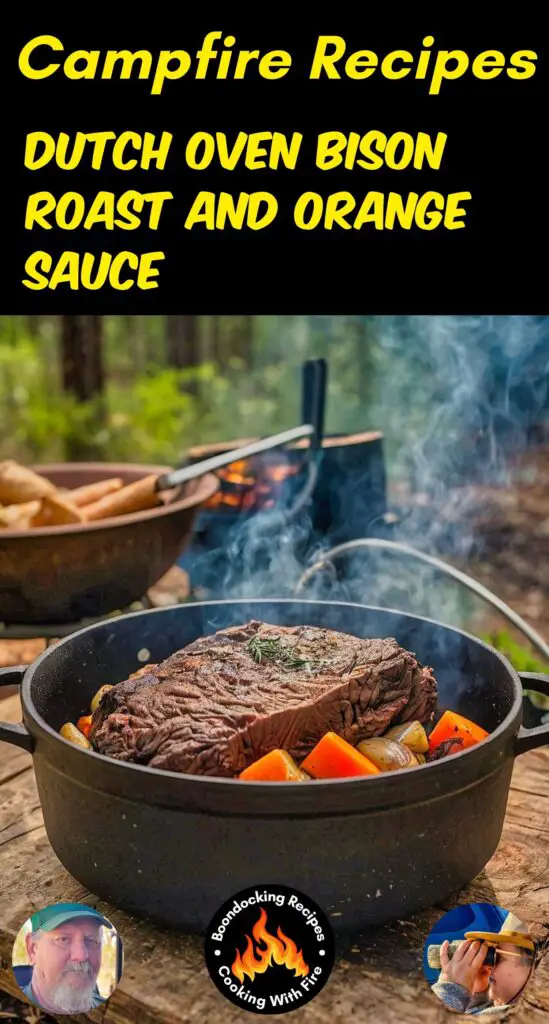
5 Reasons I Love the Dutch Oven Bison Roast and Orange Sauce
1. It is delicious
If you like meat, you will like Bison. People describe Bison meat as tasting comparable to beef but richer and somewhat sweeter. However, because bison is so thin, it is crucial not to overcook it. Bison should not be cooked beyond medium. Of course, if you use ground Bison, this isn’t an issue.
Some people are afraid that Bison will have a gamey flavor comparable to venison; however, I have never found this to be the case. Bison, in my opinion, tastes better than any meat I’ve ever tasted. Bison meat is denser, richer in flavor, and more satisfying than beef, in my opinion.
2. Lean Protein
Food guidelines advocate bison as a lean protein alongside skinless chicken breast and other wild game meats, and for good reason. 100g of lean bison contains just 2.42g of fat, compared to 8.09g in lean beef and 9.66g in lean pig. The same 100g of bison contains just 82mg of cholesterol, compared to 86mg in the same quantity of lean beef, pig, and chicken. If you want to keep things lean and clean, Bison is an excellent choice. Figures sourced from the Canadian Bison Association website.
3. Lot’s of the Good Stuff Inside
In addition to being lean as well as low in cholesterol, bison is high in iron (3.42mg per 100g lean meat compared to 2.99mg in beef, 1.1mg in pork, 0.6mg in chicken, and.34mg in salmon), vitamin B12, B6, Niacin, and Zinc. Bison’s high iron content makes it an ideal choice for both men and women who suffer from anemia. In 2018, Thehealthy.com (part of Reader’s Digest) identified bison as one of the 13 Superfoods Every Healthy Woman Needs in Her Diet because women are more susceptible to anemia, and bison delivers a high iron, low-fat choice to help address this issue.
Bison are raised without growth stimulants or hormones and are not regularly fed antibiotics.
4. It’s Sustainable
Bison are raised sustainably, contributing to the land’s development and biodiversity rather than depleting it. Because practically all of a bison’s nutritional demands can be supplied by *feeding on native perennial plants that grow natively in Canada, there is no need to overfertilize the soil. These grassland ecosystems would often be exploited for monoculture cultivation, such as grain or soybeans. Some monoculture farms have even been turned into more biodiverse bison grazing areas.
Raising a bison cow and her young requires between four and sixteen hectares of grazing space. However, bison live on, consume, and fertilize these enormous grasslands. Compare this to other commercial farming approaches that confine animals to limited quarters and raise their feed on monoculture farms. To be sustainable, these monoculture agricultural processes require a lot of acreage and artificial fertilizers. Of course, the feed must be moved from the farm to the animals.
5. You Already Know What To Do With It
One might be telling yourself, “This seems wonderful, but what do I do with it?” That is an excellent question. But here’s the thing: You are already aware of what to do with it. Let me ask you something: Have you ever cooked beef? If you said yes, you have your answer. You may make the same dishes you’ve always used; just substitute Bison for the protein. It is that easy.
Bison, The Meat of The Future.
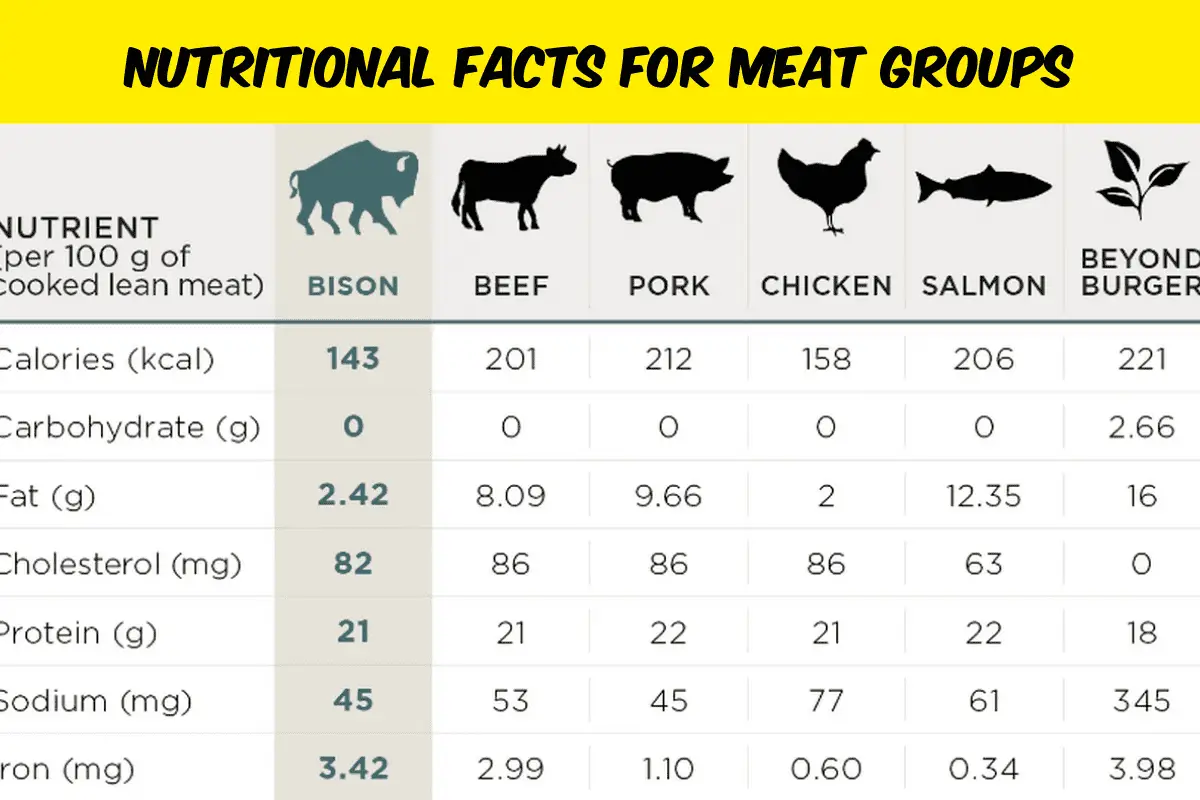
Nutritional Facts for Meat Groups
I’ve been cooking with bison for more than a decade, at private dinners, and at home, and I’ve always liked it. An observation that has impressed me over the years is that bison ought to be more widely recognized than it is, and I believe it is about to be. I believe that as consumers seek for more sustainable meals and leaner meats, bison will gain appeal. There is a growing trend, and for good cause, of eating higher quality meat in lesser quantities. Bison, with its high caloric density and unquestionable quality, is the ideal protein for this future dietary standard.
If you’ve ever spotted Bison at the grocery store, thought about it, but then passed it up because you didn’t know what to do with it or how it would taste, I hope this has given you a reason to reconsider. I hope you try it because I am convinced that you will be pleased with the results.
Grass-fed, regenerative bison meat is superior in flavor, protein content, and nutritional density. Bison is a lean, soft, naturally tasty meat with a deeper taste profile and darker color than beef. Bison meat, unlike that of other exotic species, lacks a “gamey” or wild flavor and is typically thought to be sweeter. Bison meat is interchangeable in almost any red meat dish.
Bison steaks cook around 1/3 faster than beef steaks due to their thinner nature. Bison steaks are best cooked medium-rare (135°F)/medium (145°F) to keep the meat’s moisture and taste – this means taking the meat off the fire when it is approximately 5 to 10 degrees below your ideal temperature to account for the rise in temperature while it rests.
Bison Cooking Guidelines
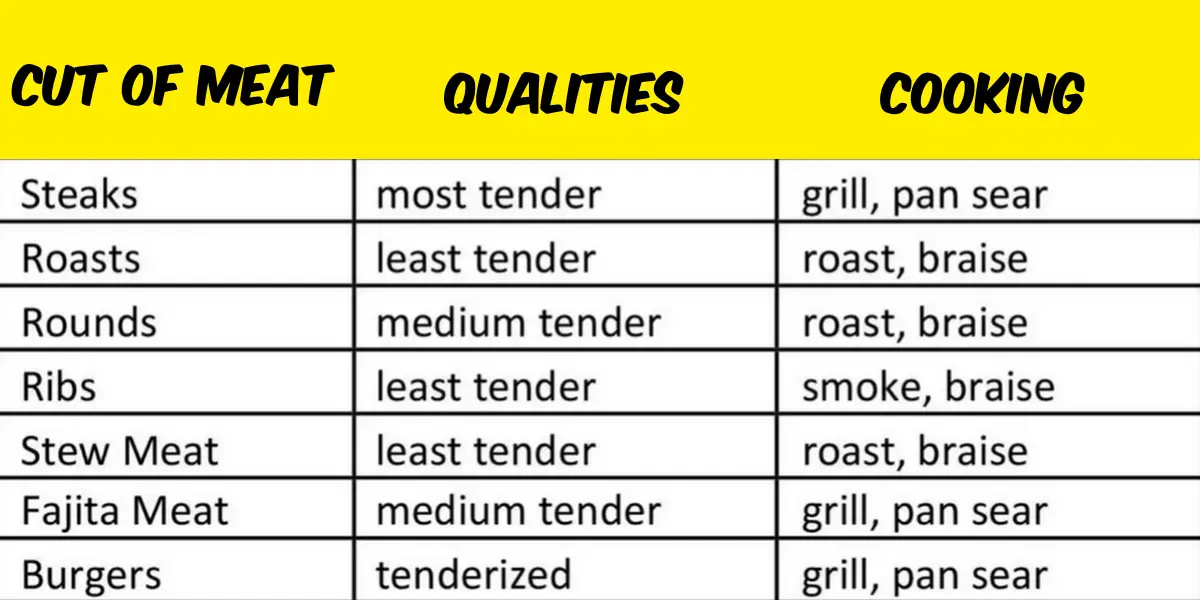
Chart Showing Various Cuts of Bison
Steaks (Grill, Broil, or Pan-Broil)
Use steak ¾ to 1 inch thick
Place in lightly oiled skillet and use medium heat on stove top
Place bison on BBQ or 6 inches from the heat source in broiler
Cook 4 – 5 minutes per side
To increase tenderness, marinate sirloin tip and inside round steaks for 8- 24 hours
Roasts (Sirloin Tip, Inside Round)
Sear roast in oven at 500°F (260°C) or on stove in a hot pan
Season roast, add ¼ cup (50 mL) of liquid (water or red wine)
Roast at 325°F (165°C) in covered pan or place in slow cooker
Cook roast to medium rare 145°F (63°C)
Roasts (Rib, Loin and Tenderloin)
Use uncovered pan with rack
Season as desired to taste
Cook at 275°F (135°C)
Do not cook past medium 155°F (68°C)
Burger
Cook ground meats to 160°F (70°C) internal temperature
Make sure all patties sit flat on grill for entire cooking time.
Cooking equipment should maintain temperature of 375°F (190°C) even when loading continuously with frozen patties
Ground bison should always be cooked until no pink remains
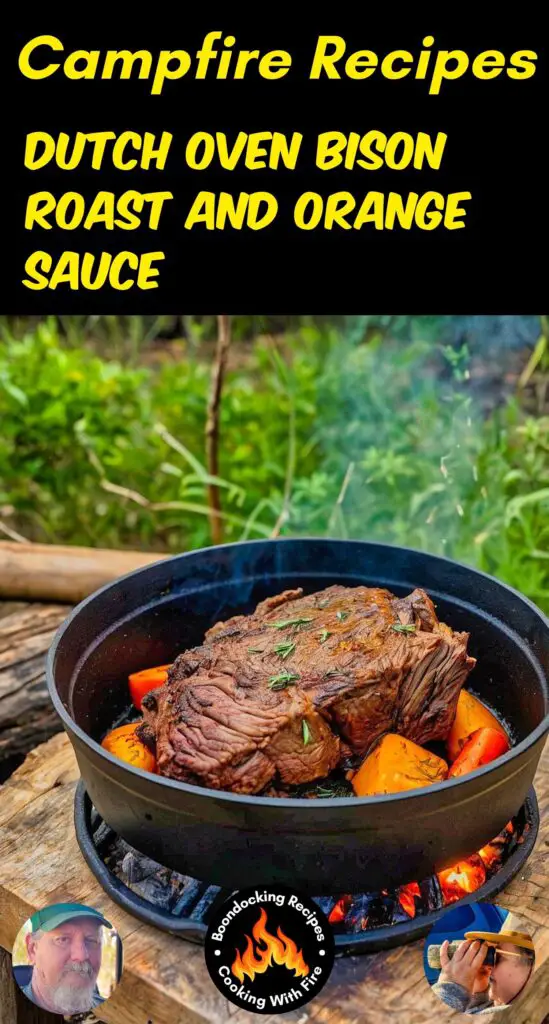
Natural versus Organic—Bison Meat is Meat Raised Naturally
The term ‘natural’ does not mean the same as certified organic. Under Canadian labelling guidelines, a ‘natural’ or ‘naturally raised’ label claim is allowed only if animals were raised with minimal human intervention, such as bison. While we can’t claim our bison meat as certified organic, we can say that our products are about as natural and unprocessed as you can get.
Bison Meat Benefits
Bison meat is one healthy protein, but don’t just take our word for it. The U.S. and Canada’s food guides recommends bison meat as a ‘heart healthy lean protein’ for anyone, and many nutritional experts tout bison as ‘a step above beef when it comes to sustainability, heart health and even taste.’ Nutrient-dense bison meat is healthy because it’s:
Bison is lean meat with a similar texture, flavor, and appearance to beef, but its impressive nutrient profile uniquely supports an active lifestyle. With no carbs, only 2.1g of fat, and a whopping 24 grams of high-quality protein per serving, the health benefits of bison meat are extensive.
Promotes Muscle Recovery
The main appeal of bison is its high quality protein content. . Protein is essential for helping your muscles recover from a tough workout. With the high-quality protein that bison contains, your body can use it for muscle synthesis and utilize the naturally-occurring vitamins and minerals to support overall health.
Supports Bone Strength
Protein has been shown to have a positive association with bone strength, especially within the senior demographic. With bison possessing a very pure and high-quality source of protein, regularly consuming this lean meat can help improve muscle mass and bone strength, keeping individuals—particularly seniors—active and independent.
Great Source of Zinc
Just a 4-ounce bison patty can provide over 3 milligrams of zinc—an essential mineral for your immune system, metabolism, and healing wounds. Zinc from meat sources, such as bison, is more bioavailable than from vegetarian sources, which means that bison provides a form of zinc that’s easy for your body to absorb and utilize in the body.
Preventative Against Anemia
Anemia is associated with low intake or poor absorption of vitamin B12. Since bison is a good source of iron and vitamin B12, consuming it can help you avoid becoming anemic and experiencing symptoms of anemia such as fatigue, dizziness, paleness, and a rapid heart rate.
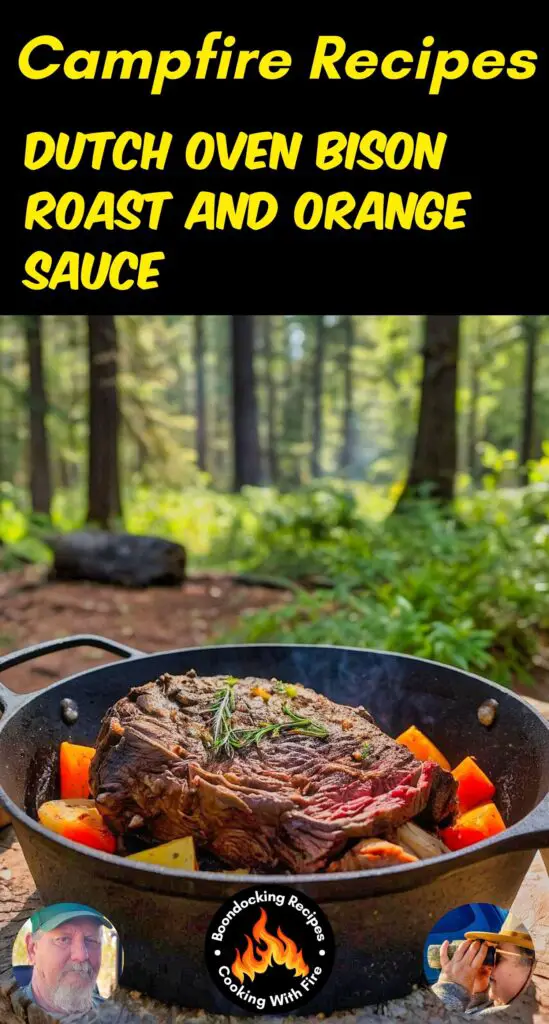
FAQ For the Dutch Oven Bison Roast and Orange Sauce
Q: What ingredients are needed for the Dutch oven Bison roast and orange sauce?
A: To make the Dutch oven Bison roast and orange sauce, you’ll need a bison roast, oranges (juice and zest), beef broth, onions, garlic, olive oil, salt, pepper, rosemary, thyme, honey or brown sugar, and optionally, soy sauce or balsamic vinegar for added depth of flavor.
Q: How do you cook the Dutch oven Bison roast and orange sauce?
A: To cook the Dutch oven Bison roast and orange sauce, start by preheating your Dutch oven with olive oil over medium heat. Season the bison roast with salt and pepper, then sear it on all sides until browned. Remove the roast and set it aside. In the same pot, sauté chopped onions and minced garlic until softened. Add beef broth, orange juice, orange zest, rosemary, thyme, and honey or brown sugar, stirring to combine. Return the bison roast to the Dutch oven, cover, and cook in a preheated oven at 325°F (163°C) for about 2.5 to 3 hours, or until the roast is tender. Optionally, add a splash of soy sauce or balsamic vinegar for additional flavor.
Q: Can I prepare the Dutch oven Bison roast and orange sauce ahead of time?
A: Yes, you can prepare the Dutch oven Bison roast and orange sauce ahead of time. Cook the roast as directed, then let it cool and store it in an airtight container in the refrigerator for up to 3 days. The flavors often meld and improve over time. Reheat the roast and sauce in the Dutch oven over low heat until warmed through before serving.
Q: What can I serve with the Dutch oven Bison roast and orange sauce?
A: The Dutch oven Bison roast and orange sauce pairs well with mashed potatoes, roasted vegetables, or rice, which can soak up the flavorful sauce. You can also serve it with a side of green beans, asparagus, or a fresh salad for a balanced meal. Crusty bread or dinner rolls make excellent accompaniments to this dish.
Q: Are there any variations to the Dutch oven Bison roast and orange sauce?
A: Yes, there are several variations to the Dutch oven Bison roast and orange sauce. You can add different herbs such as sage or parsley for a unique flavor profile. Incorporate root vegetables like carrots, parsnips, or potatoes into the Dutch oven for a one-pot meal. Adjust the sweetness by using maple syrup instead of honey or brown sugar. For a richer sauce, you can stir in a tablespoon of butter or cream just before serving.
Other Bison Recipes to Try
Cast Iron Skillet Ground Bison Brown Rice
Cast Iron Skillet Bison Sweet Potato Hash Recipe
Easy Dutch Oven Bison Bolognese Recipe
Easy Cast Iron Skillet Bison Salisbury Steak Recipe
Dutch Oven Bison Stroganoff Recipe
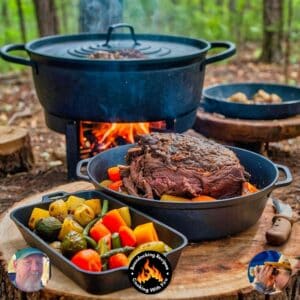
Dutch Oven Bison Roast and Orange Sauce
Equipment
- Kitchen Twine
- mixing bowl
- Cast Iron Skillet
- Grill Grate
- knives
- Campfire Cooking Utensils
- Campfire Serving Utensils
- Campfire Fork Or Tongs
- fire proof cooking gloves
- Cast Iron Dutch Oven
- Foil Paper Non Stick
Ingredients
Bison Roast
- 1/2 cup flour
- 1/4 tsp salt
- 1/4 tsp pepper
- 5 lb bison roast chuck preferred
- 1 tbsp butter
- 4 tbsp olive oil divided
- 1 onion thinly sliced
- 5 carrots peeled and cut into 1-2" pieces
- 3 cloves garlic minced
- 3 cups broth divided
- 1/2 cup red wine
- 1/2 tsp thyme leaves
- 1/2 tsp rosemary dried
- 2 bay leaves
- 3 potatoes russets peeled and cut into halves
Orange Sauce
- ⅓ cup water
- ½ cup orange juice
- ⅓ cup sugar brown
- 2 tablespoons maple syrup pure
- 2 tablespoons rice vinegar
- ¼ cup soy sauce
- 2 cloves garlic minced
- 1 teaspoon ginger fresh minced
- 1 teaspoon olive oil or other neutral oil
- 2 tablespoons cornstarch
- ¼ cup water
Instructions
Bison Roast
- The first step of making the Dutch oven Bison roast and orange sauce is to start your fire or charcoals. You will using them for the Dutch oven Bison roast and orange sauce, so you will want to make sure you have plenty on hand.
- If using embers, get a large fire going using (preferably) hardwood and let it slowly burn down. This process from start to finish can take upwards of an hour.
- If using charcoals, fill a large chimney starter and light. This process will take approximately 20 minutes to get all the coals hot and ready. You will likely want to have some charcoals available in reserve.
- Add a flat fire great on top of the embers for cooking
- Heat Dutch oven to 300 degrees F. Pat your bison roast dry.
- Combine the flour, salt, and pepper in a bowl. Press the flour into the bison's edges and all over its surface to coat it.
- Put the 2 tablespoons of olive oil and butter into the dutch oven and cook it until it's hot. Before setting the chuck roast aside on a platter, sear it on all sides.
- Return to the dutch oven and pour in 1 cup of beef stock. Sauté the onions until they become transparent, stirring occasionally. Combine the remaining beef broth with the red wine, thyme, rosemary, and bay leaves.
- In the Dutch oven, place the roast, and bake for approximately two hours. After you've checked on the roast, throw in some carrots and potatoes and return the dutch oven to the oven for about an additional hour, or until the potatoes are tender.
- After taking the dutch oven out of the oven, scoop out any juice that may have collected within. If going for a thicker consistency, mix in a tablespoon of flour and the remaining juice.
Orange Sauce
- In a cast iron pan, heat up one teaspoon of neutral-flavored oil.T oss in the minced ginger and garlic and sauté for two to three minutes, or until aromatic. Stir often to prevent scorching Cook, stirring often, for 3 minutes after adding ⅓ cup of water, orange juice, brown sugar, maple syrup, rice vinegar, and soy sauce.
- Serve and enjoy!


3 comments
Really tender bison roast and the orange sauce made it something special.
I dont know about you guys, but I think adding some cinnamon to the orange sauce for the Dutch Oven Bison Roast could really take it to the next level! Whos with me on this flavor experiment?
I cant believe they didnt mention adding a splash of whiskey to the orange sauce for that extra kick! Its a game-changer, trust me. Whos with me on this flavor upgrade?
Comments are closed.